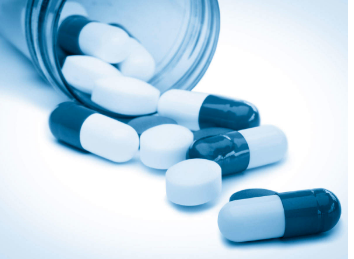COVID-19 has been a
blessing in disguise in several ways. The outbreak of the pandemic has proven
to be an eye-opener in many respects. Suddenly we observe the air quality index
(AQI) improving significantly in various cities. Drastic reduction in the
pollution levels in major rivers such as Ganga and Yamuna can also be observed.
In addition to this, the pandemic has also made us realize that some of the
perennial problems associated with healthcare, can be solved, provided, the
right intention exists.
A significant
portion of the medical bills for a patient admitted in an Intensive Care Unit
(ICU) also includes charges imposed on the usage of critical medical equipment
such as Ventilators, Infusion Pumps, and Monitors. The shortage of these types
of equipment results in compromised and sub-optimal care. Equipment such as ventilators is exorbitantly
costly, and thus, the patients are indirectly made to pay for these facilities.
This makes ICU care, out of reach for the teeming majority. To make situations
worse, eighty percent of the healthcare expenditure in India is Out-of-Pocket
(OOP), which drives a family into poverty in case of a serious healthcare event,
requiring hospitalization.
India seriously
needs jugaad innovation in healthcare to come up with affordable medical goods,
without compromising the quality of care. One of the approaches may be to identify
and remove the features which are rarely employed but play a significant role
in increasing the cost of the development. One apt example being the successful
employment of the Continuous Positive Airway Pressure (CPAP) machine as an
alternative to a ventilator for providing breathing assistance to patients
infected with COVID-19. This machine is already available and is presently being
utilized for treating patients suffering from obstructive sleep apnea (OSA).
Another approach could be the better utilization of the available ventilators,
to support multiple patients at once, using Air Tube Splitters.
On similar lines,
we can think about patient monitors as a combination of sensors and display
devices. The modular nature of this device makes it convenient to use only
those sensors which are required. The shared use of sensors will reduce the
inventory of sensors, eventually reducing the lifetime cost of a patient
monitor. The output of the different monitors can be displayed on a single
screen. This will not only reduce the cost but also improve the monitoring, as
a single healthcare professional can monitor the vitals of six to eight
patients. In my observation, the price of Patient monitors, Dialysis machines,
ECG machines, Ultrasound machines, and the Echo machine is unreasonably high.
Shouldn’t we strive to develop medical facilities that are innovative,
affordable, and adept at providing quality care to our teeming millions, or should
we wait, for the next pandemic to strike to wake us up from our slumber?
The healthcare
infrastructure in our country is inadequate. India faces capacity constraints
in terms of hospital beds and qualified healthcare professionals. Recent
experiences have shown that the problem of hospital capacity can be overcome if
the intentions are right. Delhi government ramped up its capacity in a couple
of weeks and is ready to face a situation where 1000 new COVID-19 cases are
detected per day. Indian Railways (IR) has also come forward in support and has dedicated
more than 6,500 hospital beds, which is half the number of beds from its 125
railway hospitals, dedicated to COVID-19 infected patients across the country.
Out of these, one-third of the beds numbering up to 2000 will be fitted with
ventilators. IR continuing with its support has decided, to convert as
many as 20,000 old train carriages into isolation wards for patients if the
cases multiply.
Another realization
that has occurred, is the potential of Telemedicine in delivering ambulatory
care. In ninety percent of the cases, a doctor is not even required to remain
in direct contact with the patient. A registered medical practitioner (RMP) can
run OPD without physically being present at the location. The vitals of the
patients can be recorded by trained paramedical professionals. During the
COVID-19 outbreak, the health ministry issued the guidelines for using
telemedicine in a hurry. If implemented properly, telemedicine can solve the
perennial problems of availability and affordability in the medical field.
Using telemedicine, quality care can be provided in remote parts of the country
as well. This will result in less travel to cities and hence will, decrease the
cost of care.
This
crisis has taught us many lessons. The healthcare system in India can be
revamped and healthcare can be made more inclusive, provided we work in the right
direction. No one has ever doubted the capability of India if only the right
intent is cultivated. Needless to say, COVID-19 has been a blessing in disguise
and it will bring a paradigm shift in the way healthcare service is delivered
in India and many parts of the world.
(The author is Assistant Professor at
FORE School of Management, New Delhi, India.)


